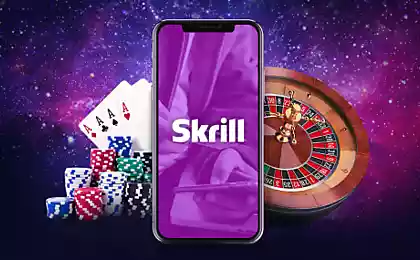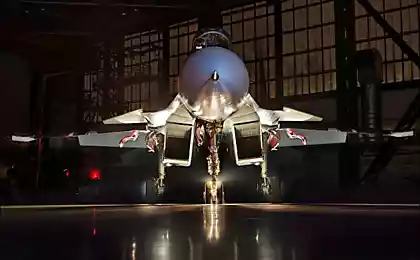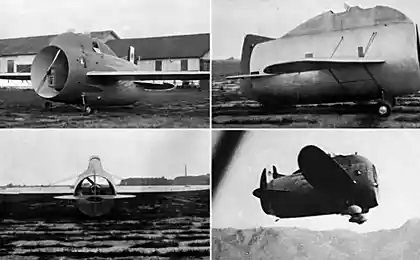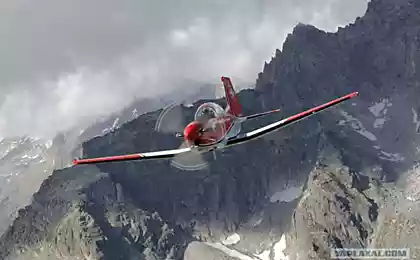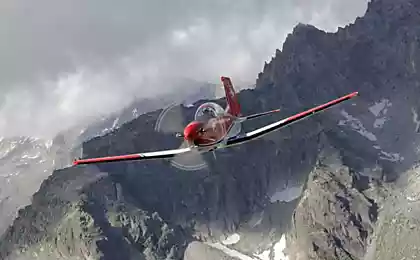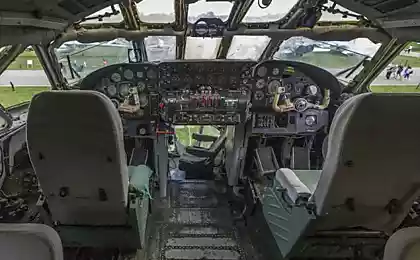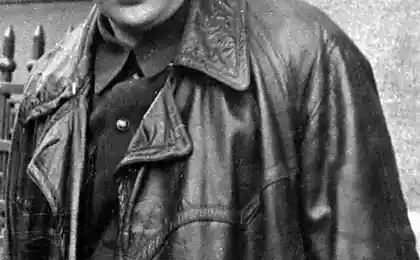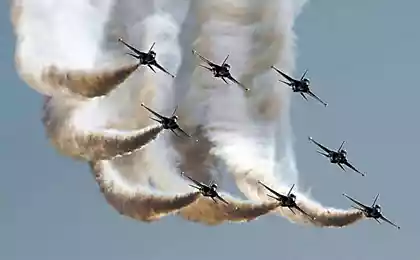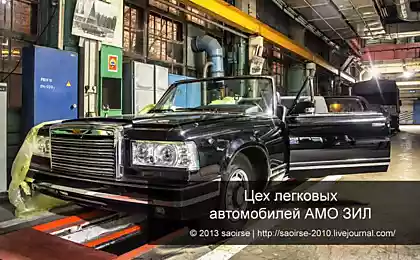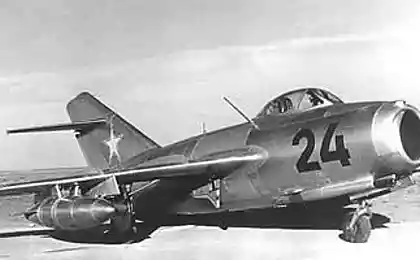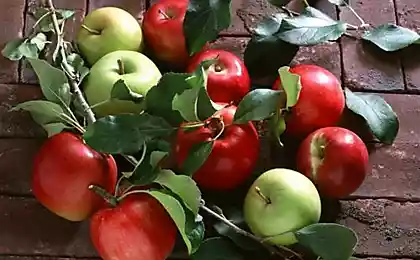1259
Giant Tu-114 and Yak-40 pipsqueak in the Air Force Museum
Under the cut 51 photos of Air Force Museum
© deletant
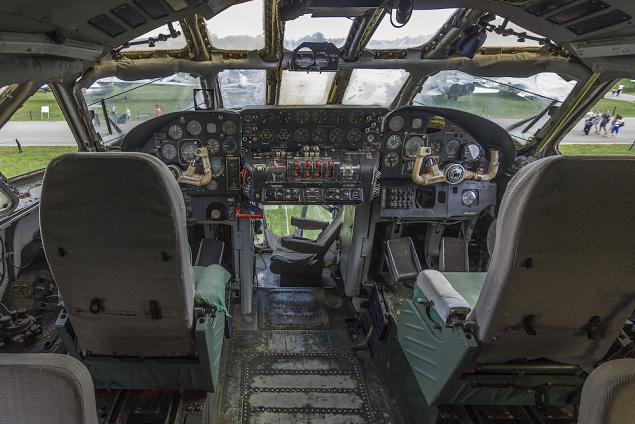
1. Tu-114 with tail number A-5611, which is in the Air Force Museum in Monino - this is the first instance of the flight with a very unusual destiny.
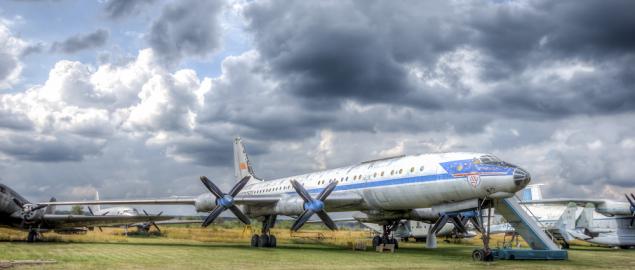
2. Development of the liner began in 1955 on the basis of strategic bomber, and he wore a cipher design Tu-95P. At the Tupolev had experience alterations in the civil war machine - the Tu-16 and Tu-104. The first flight of the Tu-114, named "Russia", made Nov. 15, 1957. In 1958 he was made a demonstration flight in New York, at the same time he received the Grand Prix at the World Exhibition in Brussels. 19-23 June 1959 was shown at the Salon in Le Bourget, June 28 and flew to New York with a government delegation headed by Deputy Chairman of the USSR FR Kozlov.

3. The most famous episode was the first official visit of Khrushchev to Washington in September 1959. And this despite the fact that the plane has not completed the test, Kolmogorov was so confident in his car.

4. In America, there was a discomfiture. Tu-114, in contrast to the Tu-95, designed as nizkoplan, because of what had to do high, compared with other Soviet liners, landing gear. At the airport, Baltimore was not a suitable ladder, so resorted to the use of ladders, which can be clearly seen in the photo below.

5. A total of 31 built copy of the Tu-114, which made regular flights to Khabarovsk, Tokyo, Alma-Ata, Tashkent, Novosibirsk, Cuba. In 1977, all aircraft were withdrawn from service. Bort L-5611 "Russia" made the last flight in Monino March 16, 1972.
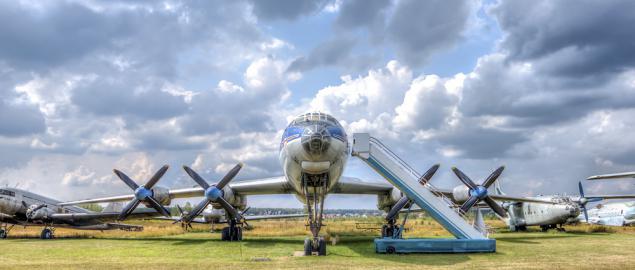
6. Since 2010, certain open days you can visit the interior of the aircraft. You need to defend the long queue and go up through the old stairwell.
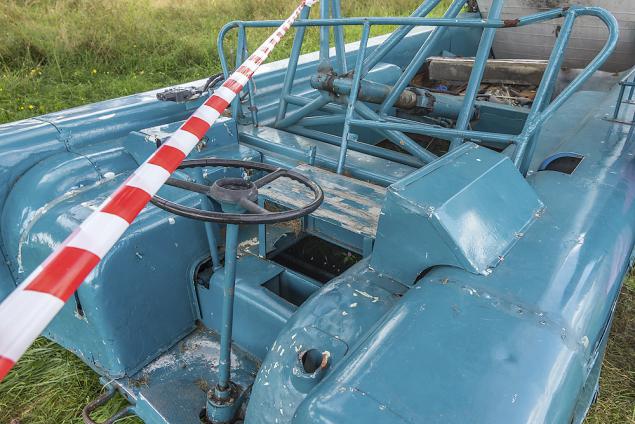
7. Looking at the impressive belly of the ship, go to the salon.
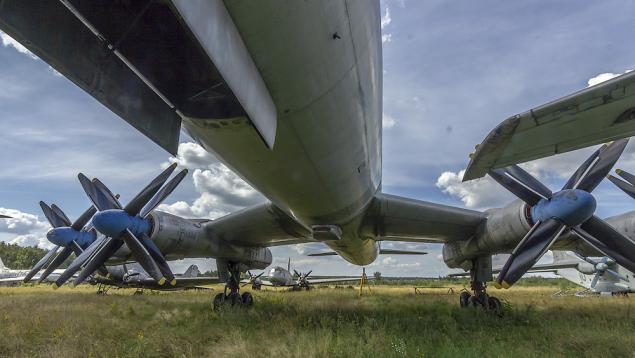
8. To make it clearer, here is a diagram of the interior russos.
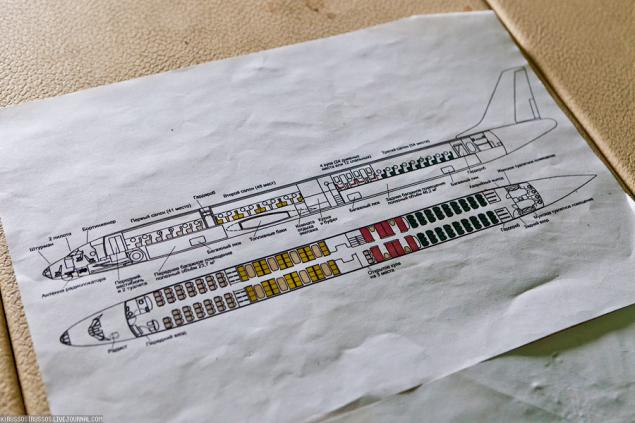
9. Inspection start with the end. The tail of the plane is the rear entrance hall with access to both sides.
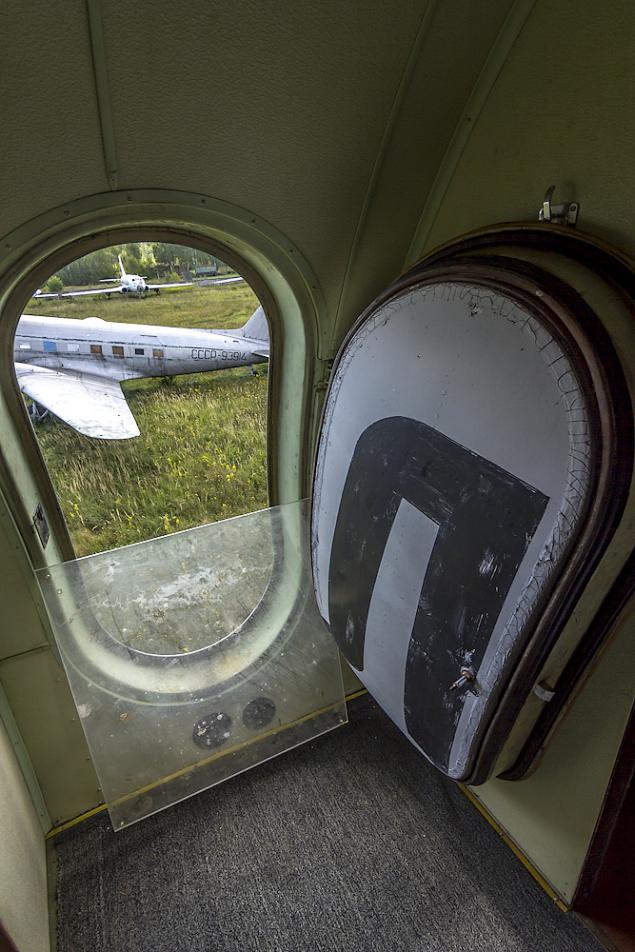
10. Because of the emergency exit hatch visible area of the museum.
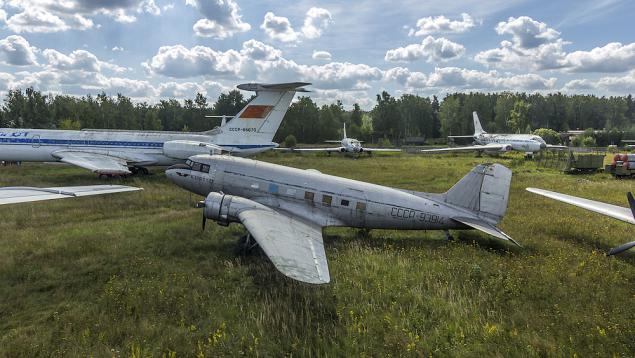
11. In the same vestibule are toilets. The other two bathrooms are located in the bow of the ship.

12. Every toilet - two sinks.
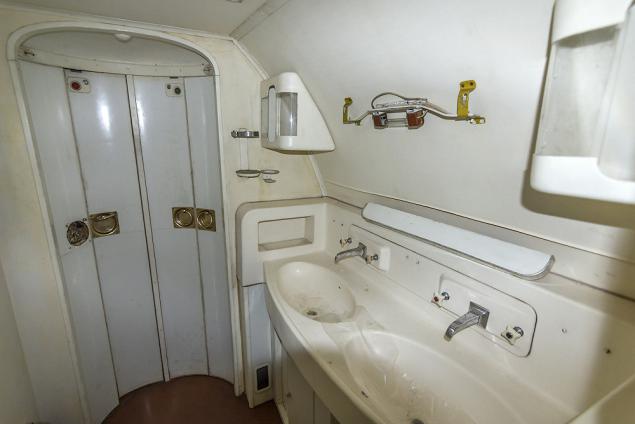
13. For washbasins are two toilet cabins.
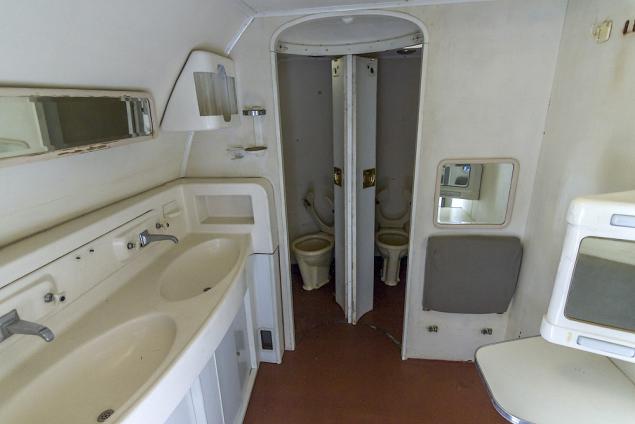
14. Before the passenger cabin is a wardrobe.

15. The third room was designed for 54 seats.
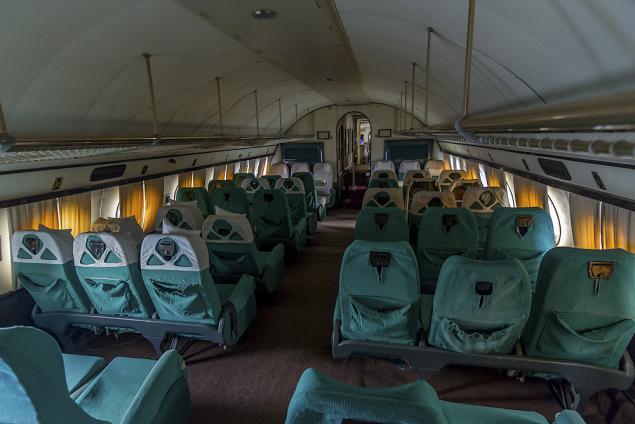
16. Twelve seats are in front of a table with folding edges.
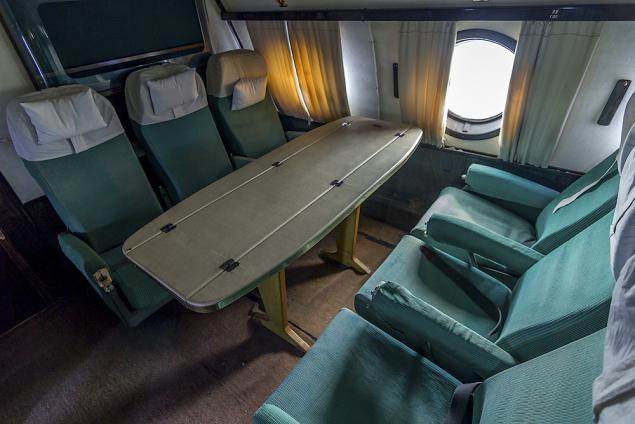
17. Above each row of seats has a speaker and a button to call a stewardess.
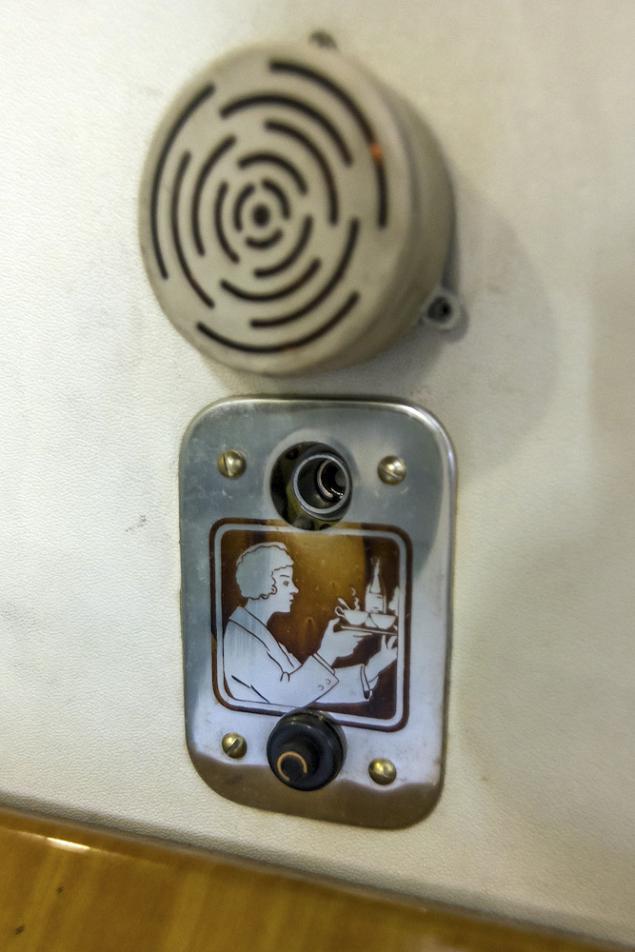
18. Above the rows of seats - net open shelves for luggage.
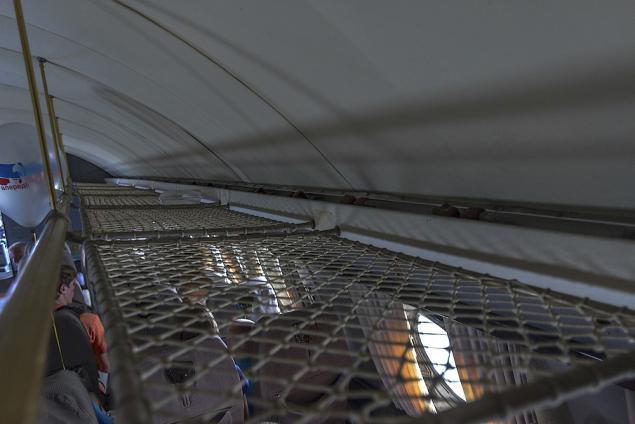
19. The next section of the cabin - four compartments.
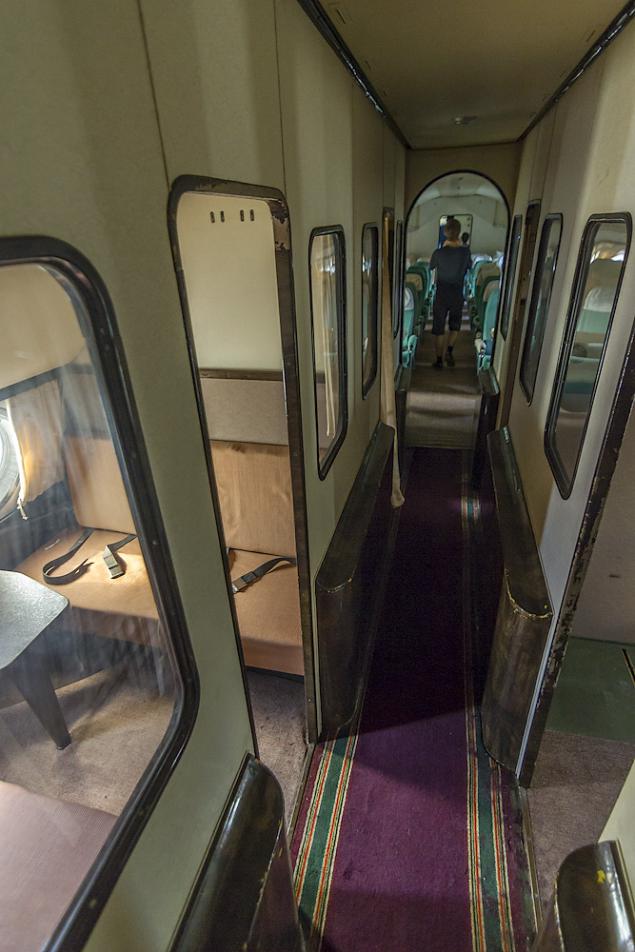
20. Here, seating 24 or 12 beds (one regiment was put across).

21. Then - three seats for crew members and first aid kit.
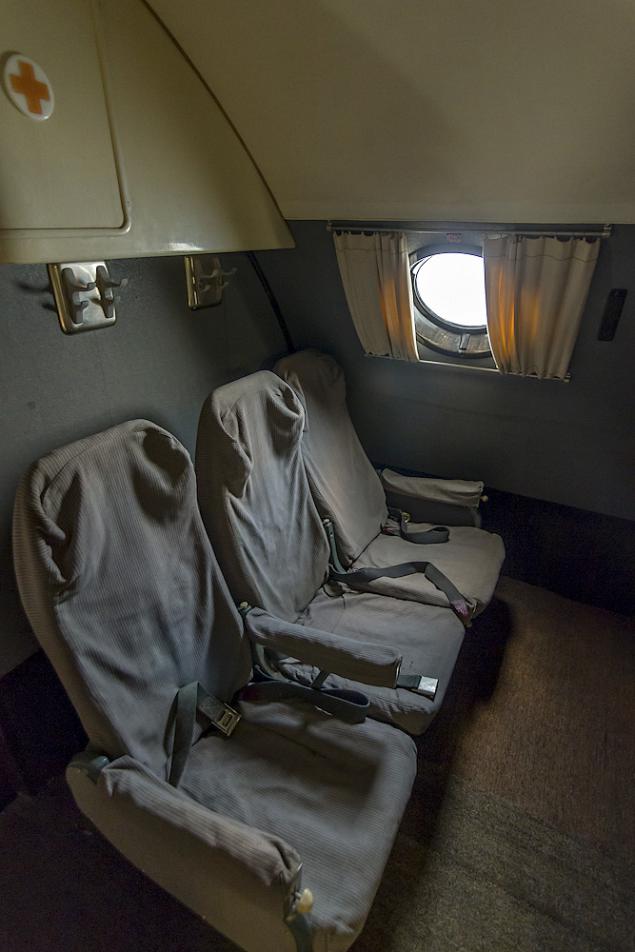
22. Under armchairs - oxygen cylinders.
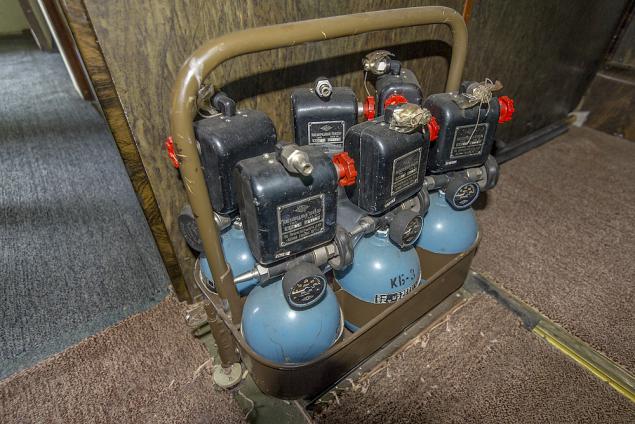
23. On the other hand there is a staircase to the lower deck, where there was a kitchen and a snack bar.
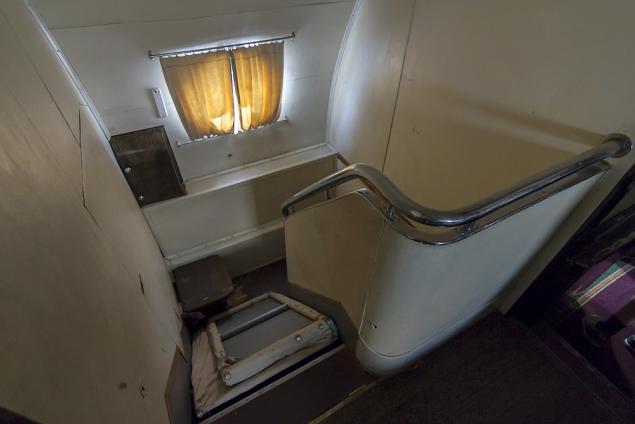
24. And on top - a place for serving meals, kitchen connected with two lifts (one of them - to the left in the photo).
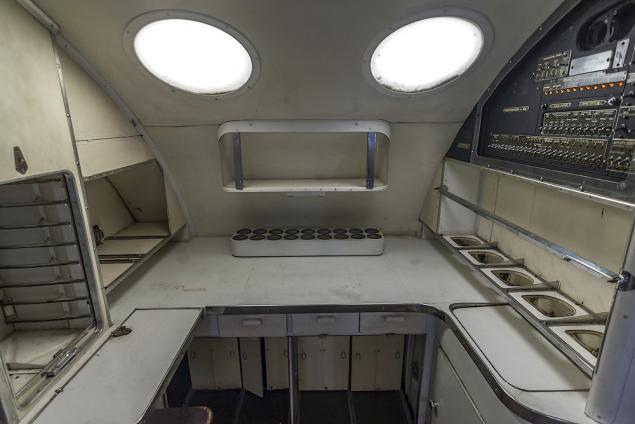
25. Here, the remote management equipment interior: lighting, heating, water. Here lamp lights call flight attendants, one for each compartment and one for the whole interior.
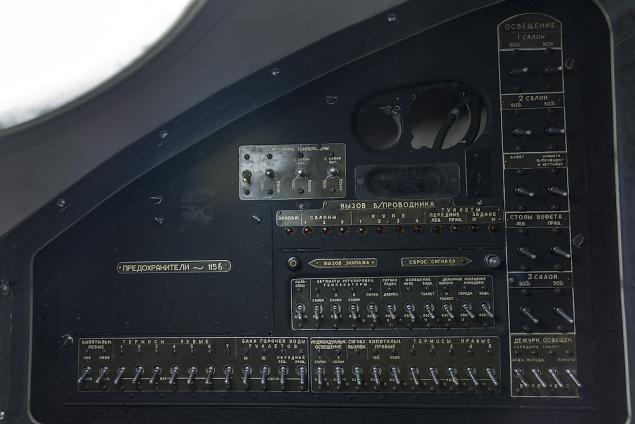
26. The second lounge for 48 seats - more comfortable.

27. Here, the tables have each row of seats.
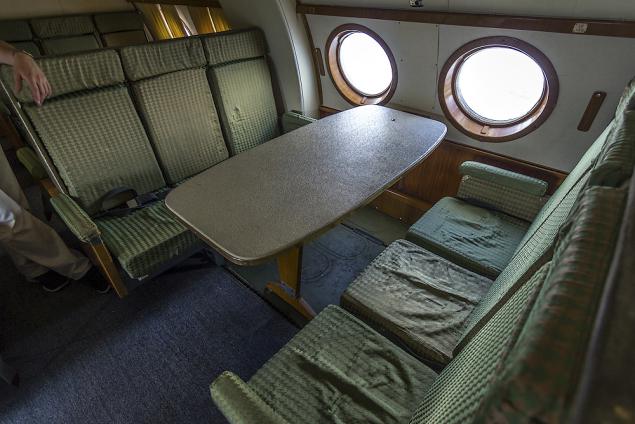
28. And here is the second historic photo salon. On the tables stood lamps and ashtrays.
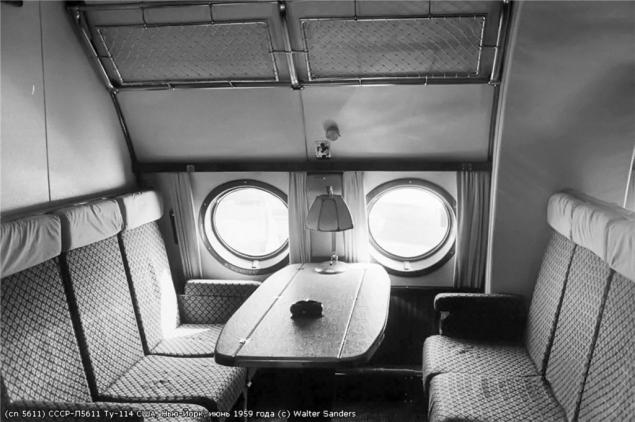
29. During the portholes - wide wing aircraft.
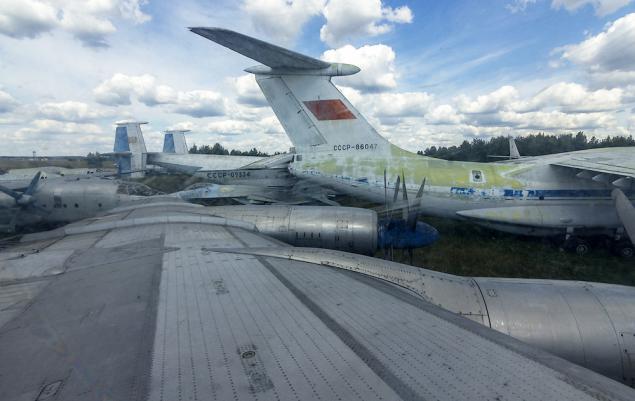
30. The first salon is like a third - the same series of six seats. In total there are 41 seats.

31. Next is the front entrance hall with two toilets.

32. Finally, look at the cockpit. Entrance to it is limited, but notice how well she has recovered from the looting by vandals in 2006. Left commander's right - the second pilot, at the bottom - the navigator.

33. For the co-pilot - flight engineer seat.

34. Yak-40 - the world's first jet aircraft for local airlines.

35. Serial production was launched in 1967. There were built more than a thousand of these machines.

36. The aircraft worth three AI-25 engine thrust 1500 kg.

37. The central engine is equipped with a reversing device.

38. Available in Monino Yak-40 made its first flight March 17, 1971. It was used mainly for the demonstration flight, participated in the salon in Le Bourget. In 1975 it was transformed into a prototype Yak-40K (cargo-passenger version). Prior to 1980, used to fly presentation, he has not yet been written off and made his last flight in Monino. Aircraft renovated in 2006, and now you can get inside the passenger compartment in the Open Days Air Force Museum.

39. To enter the tail of the aircraft descends a ladder.

40. Near the entrance is a snack bar.

41. Next - passenger cabin.
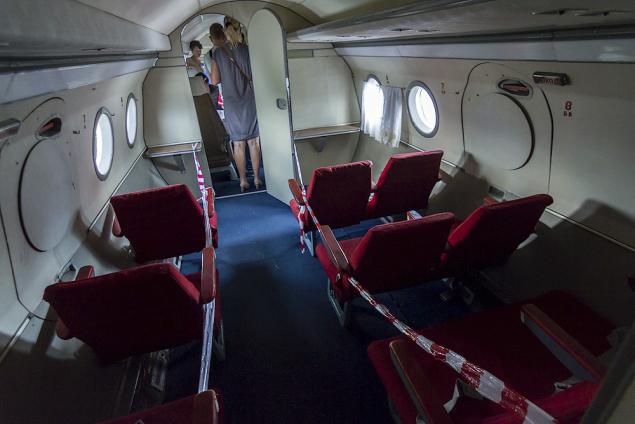
42. Initially, the plane had 24 seats, but the alteration in 1975 divided the room into two parts.
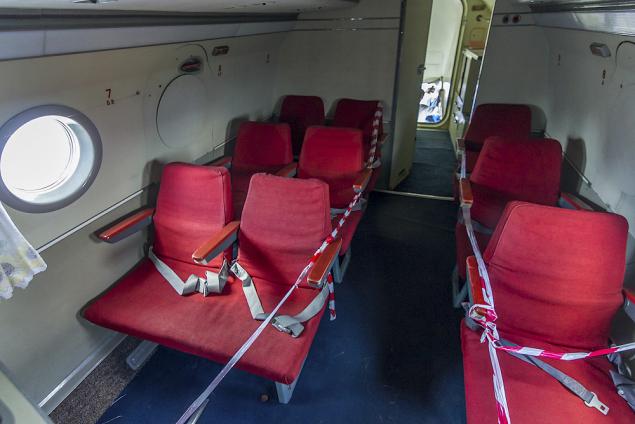
43. In the second cabin - 9 seats.
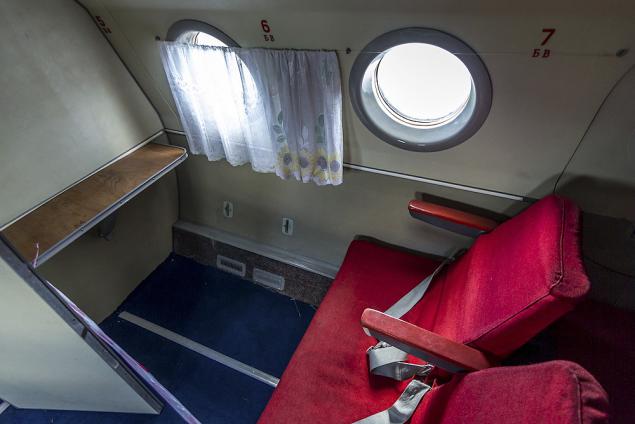
44. The first salon is much more convenient, it was made for the presentation of the aircraft, widely exported.

45. The cockpit in perfect condition.
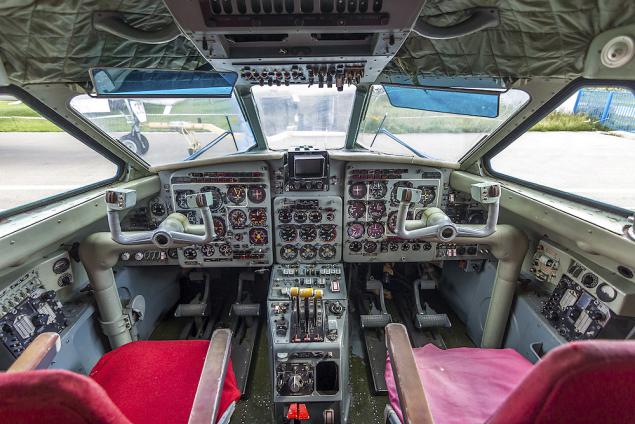
46.
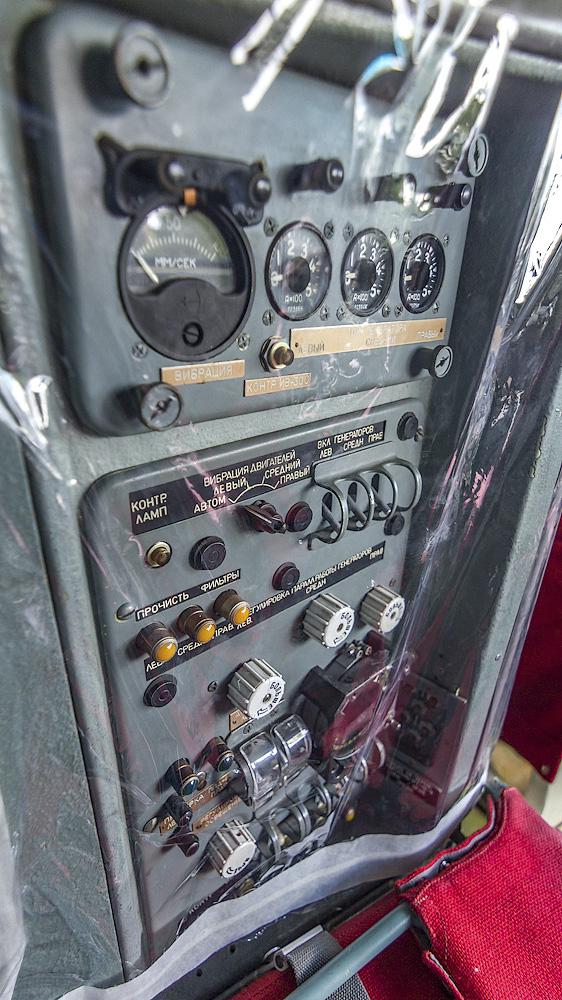
47. The engine control levers.

48. The place of the second pilot.
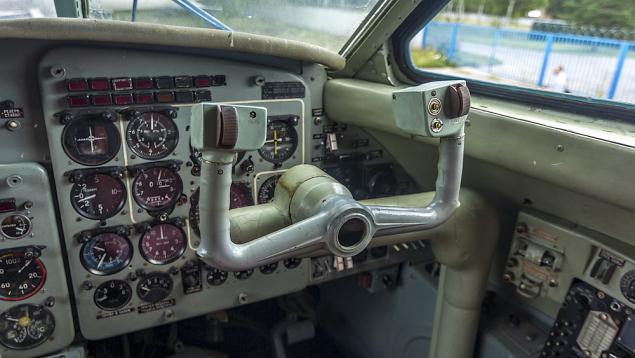
49. Place the commander.
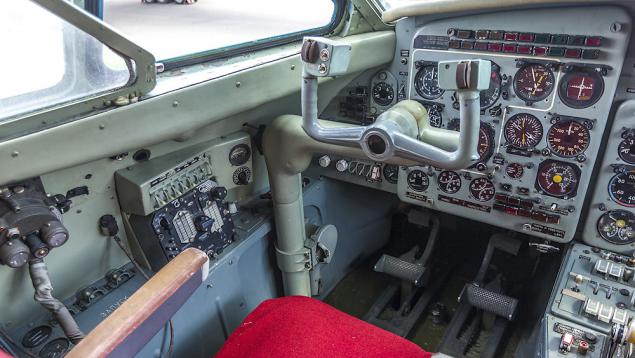
50. Helm.

51. In front of there is one way through it leaving the car.

Source:
© deletant

1. Tu-114 with tail number A-5611, which is in the Air Force Museum in Monino - this is the first instance of the flight with a very unusual destiny.

2. Development of the liner began in 1955 on the basis of strategic bomber, and he wore a cipher design Tu-95P. At the Tupolev had experience alterations in the civil war machine - the Tu-16 and Tu-104. The first flight of the Tu-114, named "Russia", made Nov. 15, 1957. In 1958 he was made a demonstration flight in New York, at the same time he received the Grand Prix at the World Exhibition in Brussels. 19-23 June 1959 was shown at the Salon in Le Bourget, June 28 and flew to New York with a government delegation headed by Deputy Chairman of the USSR FR Kozlov.

3. The most famous episode was the first official visit of Khrushchev to Washington in September 1959. And this despite the fact that the plane has not completed the test, Kolmogorov was so confident in his car.

4. In America, there was a discomfiture. Tu-114, in contrast to the Tu-95, designed as nizkoplan, because of what had to do high, compared with other Soviet liners, landing gear. At the airport, Baltimore was not a suitable ladder, so resorted to the use of ladders, which can be clearly seen in the photo below.

5. A total of 31 built copy of the Tu-114, which made regular flights to Khabarovsk, Tokyo, Alma-Ata, Tashkent, Novosibirsk, Cuba. In 1977, all aircraft were withdrawn from service. Bort L-5611 "Russia" made the last flight in Monino March 16, 1972.

6. Since 2010, certain open days you can visit the interior of the aircraft. You need to defend the long queue and go up through the old stairwell.

7. Looking at the impressive belly of the ship, go to the salon.

8. To make it clearer, here is a diagram of the interior russos.

9. Inspection start with the end. The tail of the plane is the rear entrance hall with access to both sides.

10. Because of the emergency exit hatch visible area of the museum.

11. In the same vestibule are toilets. The other two bathrooms are located in the bow of the ship.

12. Every toilet - two sinks.

13. For washbasins are two toilet cabins.

14. Before the passenger cabin is a wardrobe.

15. The third room was designed for 54 seats.

16. Twelve seats are in front of a table with folding edges.

17. Above each row of seats has a speaker and a button to call a stewardess.

18. Above the rows of seats - net open shelves for luggage.

19. The next section of the cabin - four compartments.

20. Here, seating 24 or 12 beds (one regiment was put across).

21. Then - three seats for crew members and first aid kit.

22. Under armchairs - oxygen cylinders.

23. On the other hand there is a staircase to the lower deck, where there was a kitchen and a snack bar.

24. And on top - a place for serving meals, kitchen connected with two lifts (one of them - to the left in the photo).

25. Here, the remote management equipment interior: lighting, heating, water. Here lamp lights call flight attendants, one for each compartment and one for the whole interior.

26. The second lounge for 48 seats - more comfortable.

27. Here, the tables have each row of seats.

28. And here is the second historic photo salon. On the tables stood lamps and ashtrays.

29. During the portholes - wide wing aircraft.

30. The first salon is like a third - the same series of six seats. In total there are 41 seats.

31. Next is the front entrance hall with two toilets.

32. Finally, look at the cockpit. Entrance to it is limited, but notice how well she has recovered from the looting by vandals in 2006. Left commander's right - the second pilot, at the bottom - the navigator.

33. For the co-pilot - flight engineer seat.

34. Yak-40 - the world's first jet aircraft for local airlines.

35. Serial production was launched in 1967. There were built more than a thousand of these machines.

36. The aircraft worth three AI-25 engine thrust 1500 kg.

37. The central engine is equipped with a reversing device.

38. Available in Monino Yak-40 made its first flight March 17, 1971. It was used mainly for the demonstration flight, participated in the salon in Le Bourget. In 1975 it was transformed into a prototype Yak-40K (cargo-passenger version). Prior to 1980, used to fly presentation, he has not yet been written off and made his last flight in Monino. Aircraft renovated in 2006, and now you can get inside the passenger compartment in the Open Days Air Force Museum.

39. To enter the tail of the aircraft descends a ladder.

40. Near the entrance is a snack bar.

41. Next - passenger cabin.

42. Initially, the plane had 24 seats, but the alteration in 1975 divided the room into two parts.

43. In the second cabin - 9 seats.

44. The first salon is much more convenient, it was made for the presentation of the aircraft, widely exported.

45. The cockpit in perfect condition.

46.

47. The engine control levers.

48. The place of the second pilot.

49. Place the commander.

50. Helm.

51. In front of there is one way through it leaving the car.

Source:

